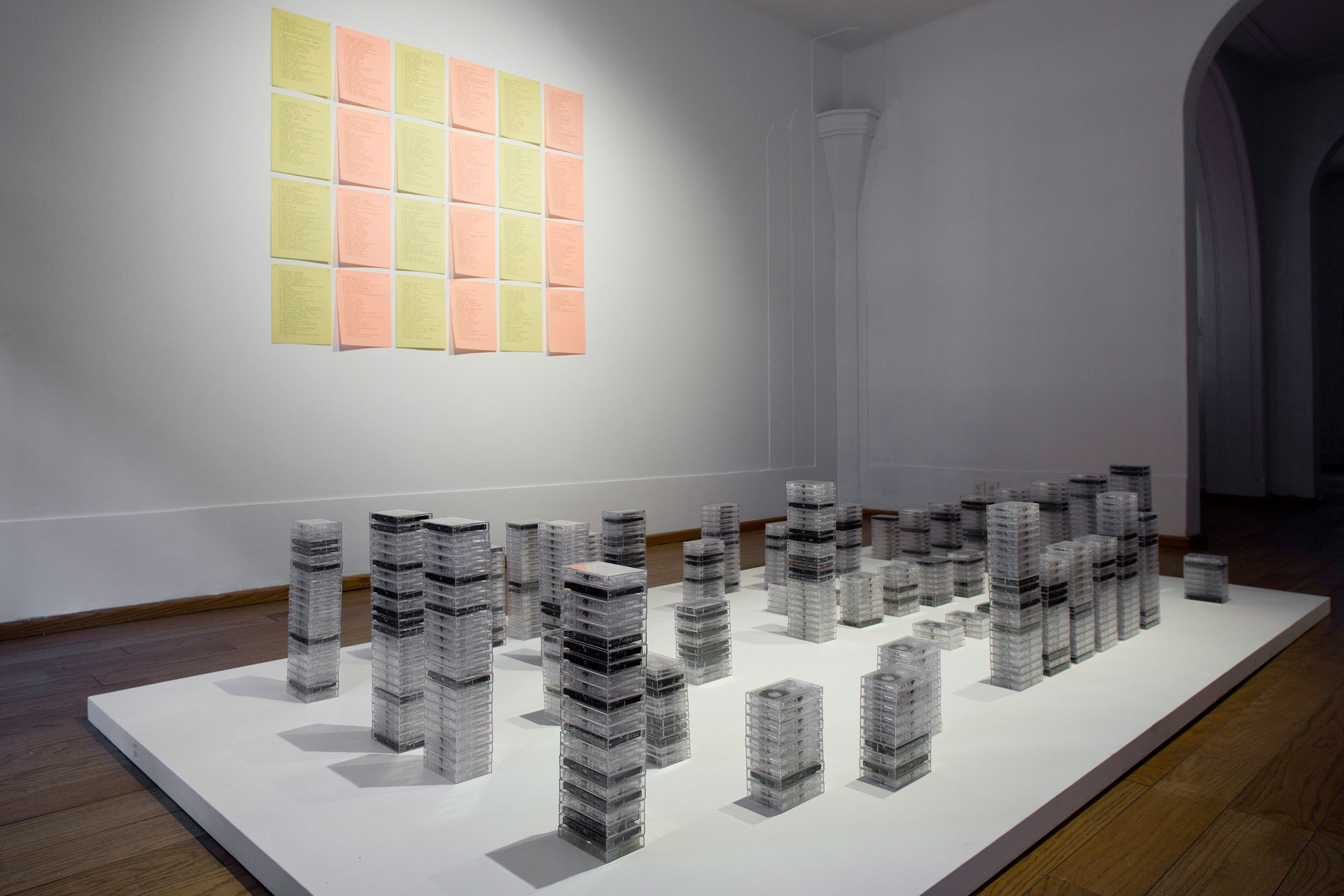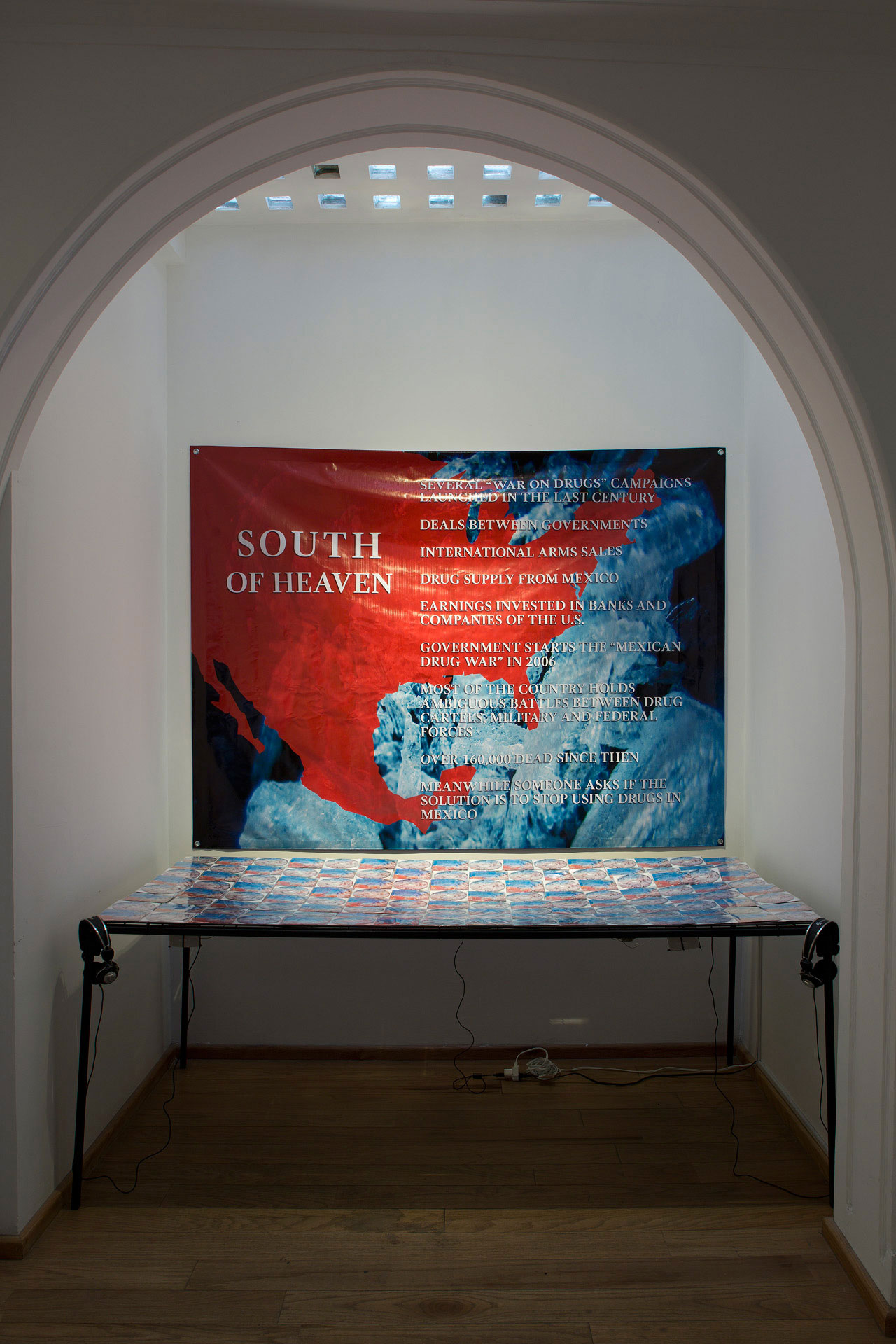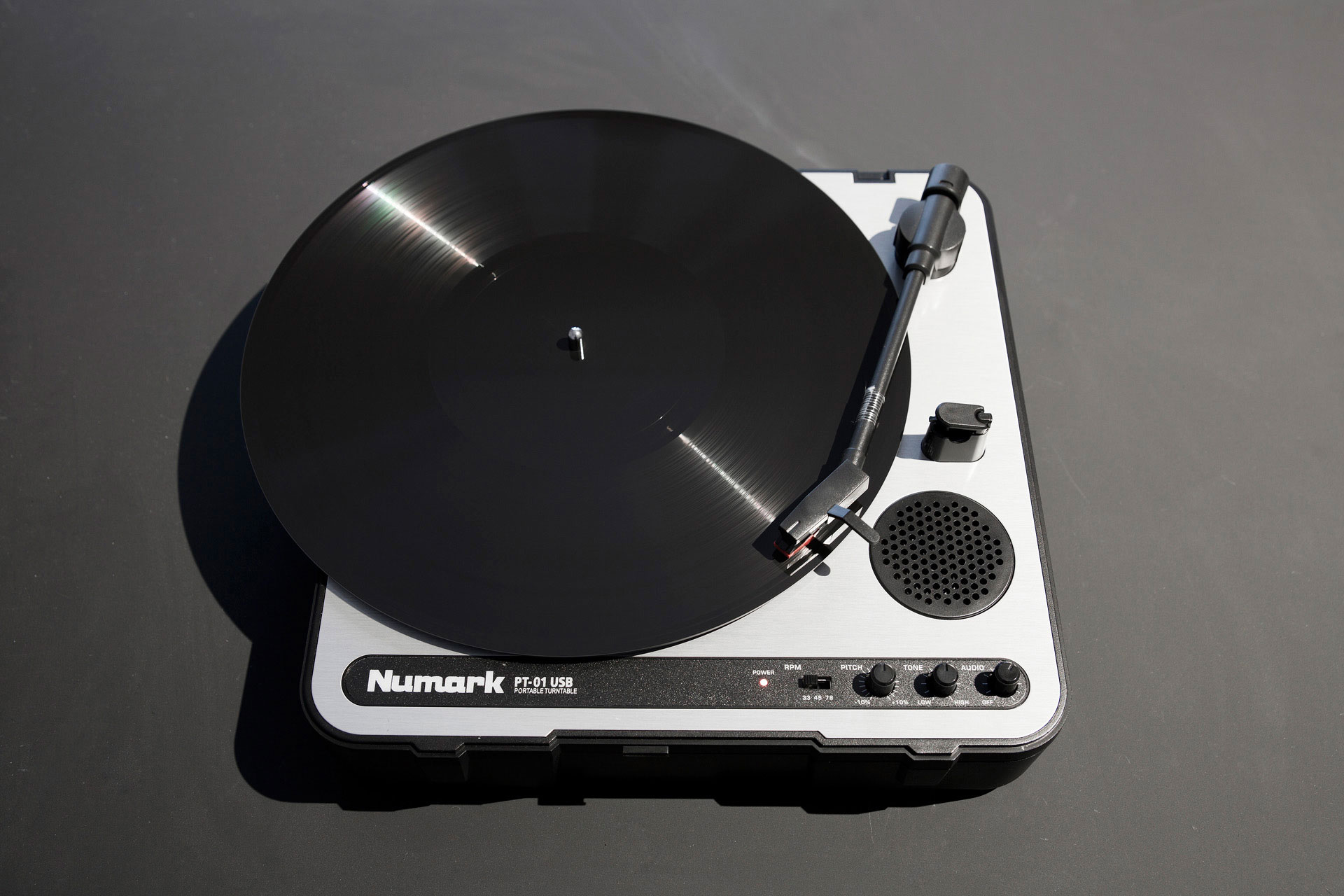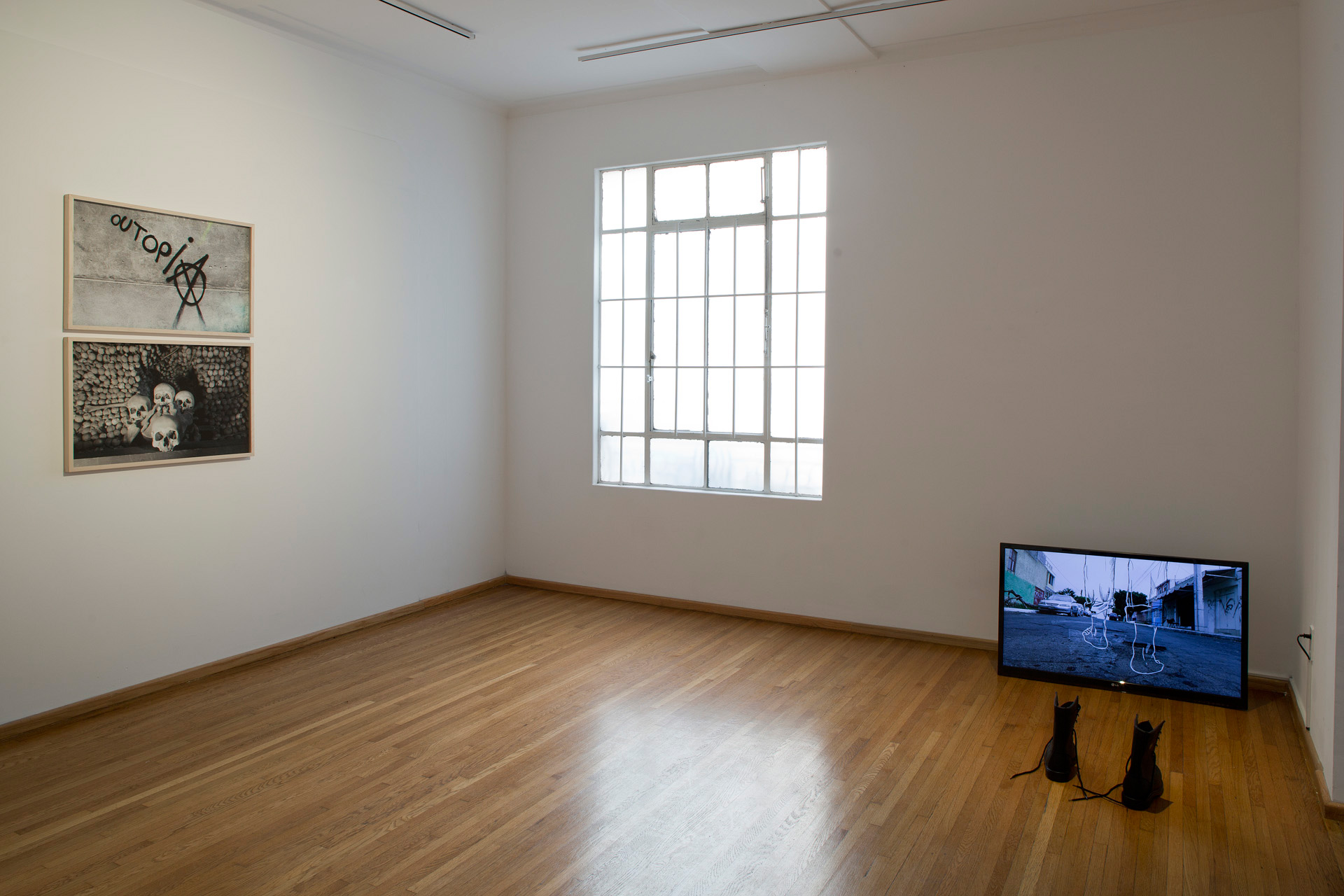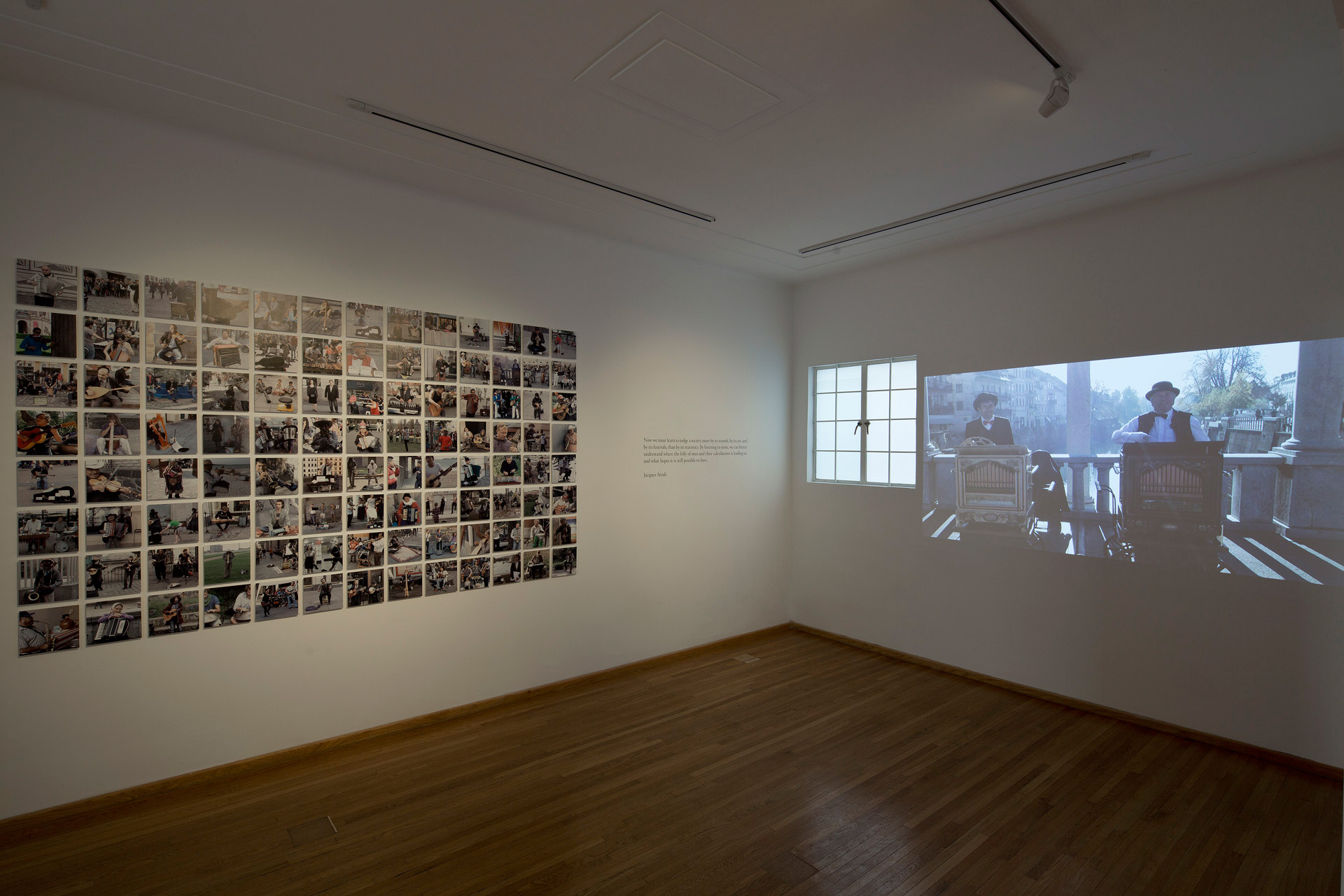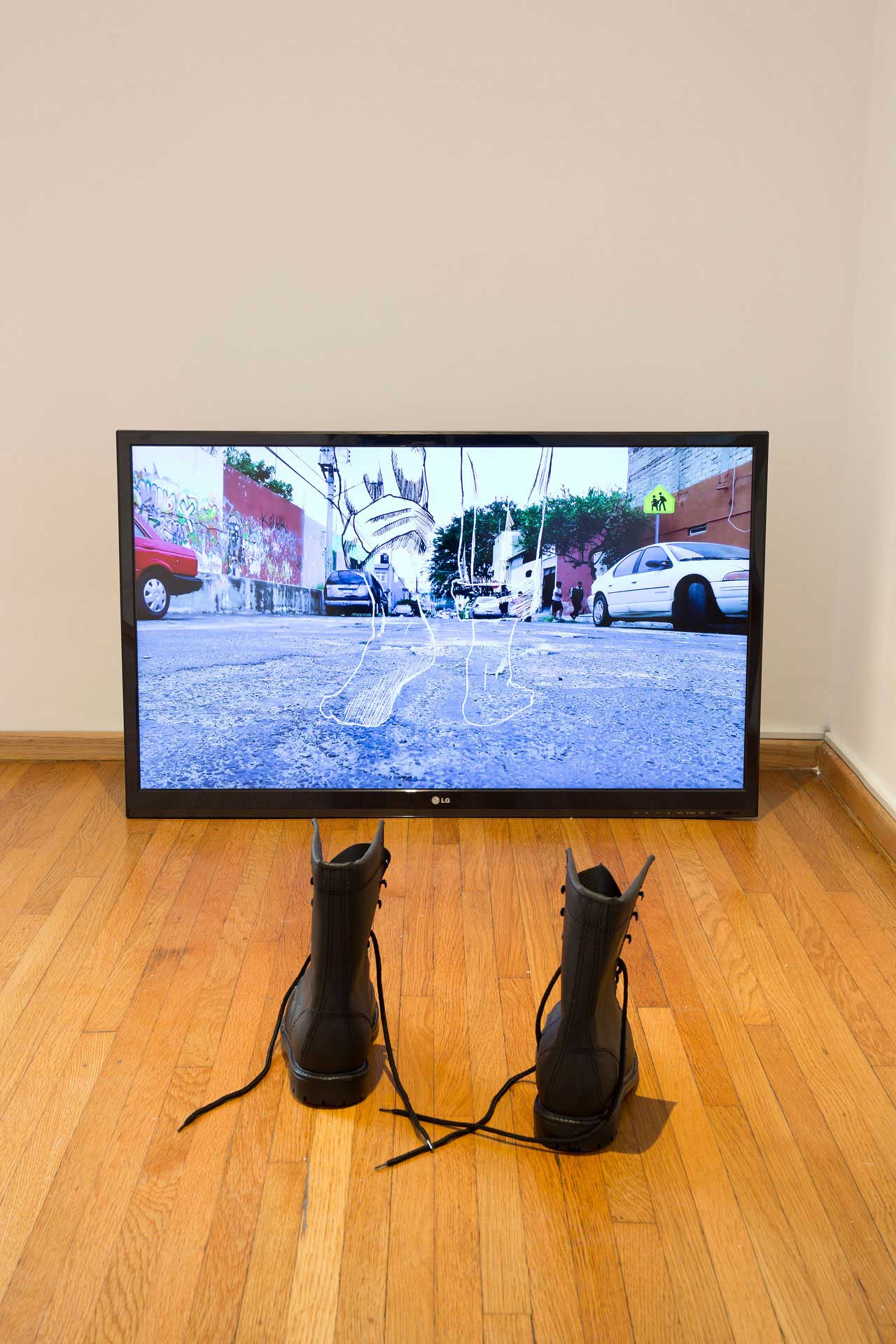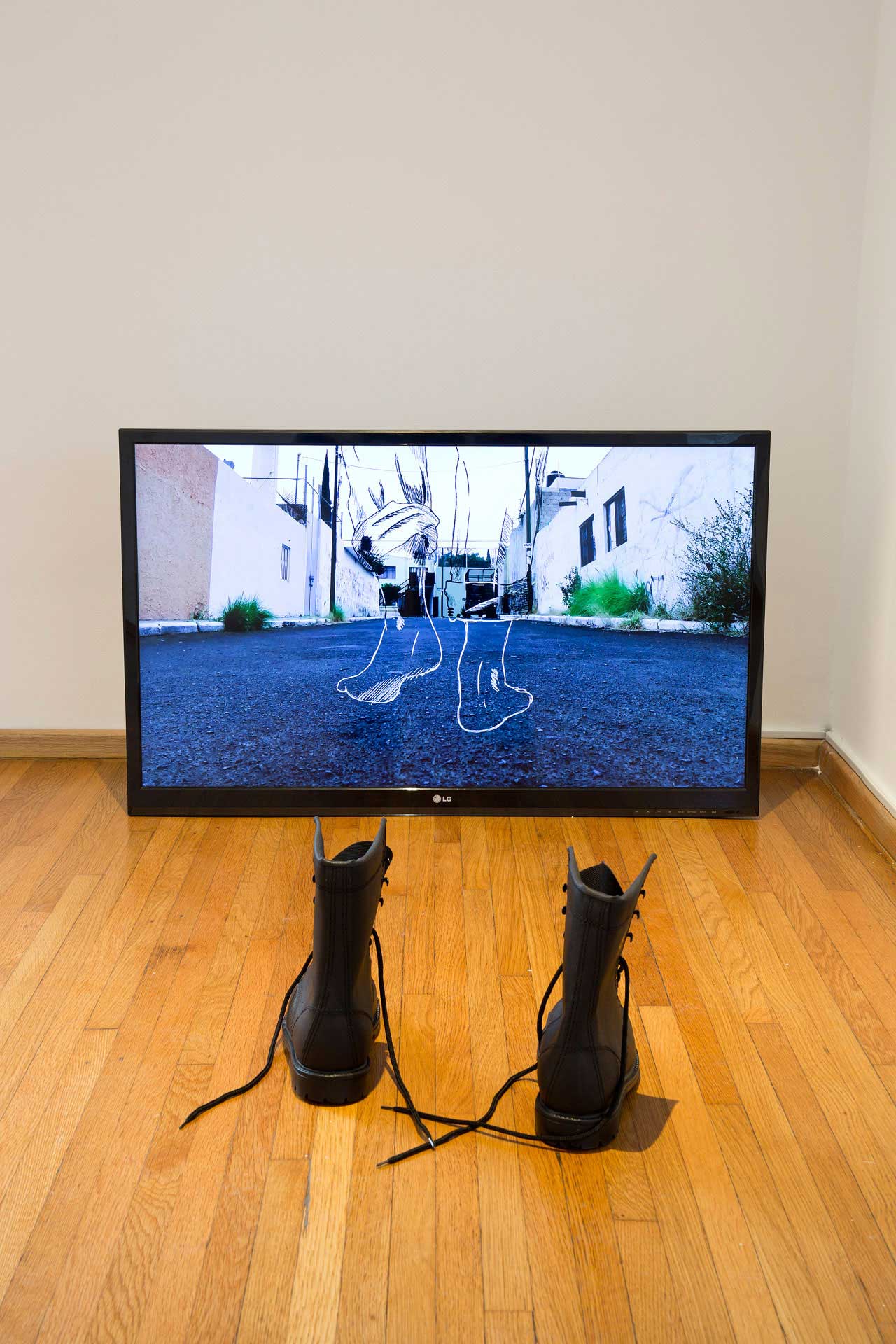Imagen Pública
ISRAEL MARTÍNEZ
02.07.17 - 05.06.17

It was 10am and we hadn’t slept at all. The night before, after a mind-blowing concert in a small experimental music hall in the Turkish neighborhood of Neukölln, Israel Martínez invited me to a Lebanese restaurant, outside of which some street musicians (also Lebanese) were playing. Martínez and I had met during the concert, during which an ensemble of Japanese artists that played with synthesizers, plastic bags, piezos and a violin. From the Lebanese restaurant, we moved to a decadent but seducing place filled with old-school punks. We ended up talking to a pair of English women, experts in hardcore that we met buying beer in a Späti on Skalitzer Strasse. At that point, everything turns confusing and blurry: I vaguely remember a jazz band with a magnificent saxophonist and the confinement in one of those clubs where you are not sure what time it is (if it is daytime or nighttime) with loud techno music playing. After hours of complete nebulous darkness, my memory starts coming back near Potsdamer Platz, walking and drinking denser, dark beer. While having for breakfast some terrible currywurst, we stood in awe while watching a TV news report regarding the growing wave of violence in Mexico due to the war against the narco cartels. Abstracted, listening to the growing noise of cars, the steps of morning runners on the pavement, and the crisp sounds of the army of workers sweeping the streets, Martínez and I reached (by mere chance) the entrance of the Museum of Musical Instruments. Hiding from the sun, we paid our tickets with no expectations whatsoever but as soon as we walked through the corridor that led to a huge hall, we became absolutely mesmerized: we were standing in front of a sea of antique instruments. As if sleeping, we walked past flutes, corns and medieval drums. The electronic music still reverberated in our heads and we got lost among old instruments in all shapes and with all different types of ornaments. It was as if we were walking through diverse moments of the history of music. It was in that manner that we reached the zone of the harpsichords, clavichords and keyboard instruments that preceded the modern piano. We stopped to contemplate, ecstatic (still a bit drunk), their strange forms and ornaments. In some cases, these antique pianos had two sets of keys so that four hands could play them, each person on one side of the instrument. In others, the harp was placed vertically, resembling a tower. On different parts, the instruments had painted on them flowers, birds, classic motifs and landscapes. We then realized that all of them produced music and a sonority that we will never recapture. We then tried to imagine how it was that people back then would come together to listen to them, radically different from what Martínez and I had experienced that night, with another universe of sensibilities, desires and concerns. In that moment I realized that I was about to miss my flight back home. We ran to the U-Bahn station. Among our rush and the city’s turmoil, we exchanged impressions of what had happened that night and we talked about the music, the instruments, the sound, the society, the technologies, the noise, art….we then began a conversation that, to this day, hasn’t ended. Exhibition The 20th century is marked by the introduction of technologies related to the recording and reproduction of visual and sound works into everyday life. Specifically, the postwar era marks the inauguration of a time period during which the musical formats and gear were consolidated as mass phenomenon. Since then, the way music is stored, distributed and reproduced has changed enormously. From vinyl records, 8-track, cassettes and CD’s, we have come to digital files that are kept in hard drives and in “the Cloud”; music on the Internet that we access through apps and digital tools. Each one of these technologies has determined the logics of consumption and circulation that have radically modified the way we socialize through the phenomenon of sound. Until a few years ago, in order to acquire a cassette or record that was not part of the mainstream music, one would have to ask a neighbor that was traveling outside our country or a friend who could afford an original production or to save for weeks in order to be able to buy one from a store that took risks by choosing different contents from those that circulated within the profitable and banal commercial circuits. Precisely, this exhibition takes its name from -Imagen Pública-, a music store where Israel Martínez, artist from Guadalajara, found a harmonious sound stream from which to drink. The store, located in Alcalde Avenue of that city, offered a vast catalog of cassette copies at affordable prices for the average alternative musicophile. In order to dress the cassettes, “El Indio” (as some people knew José Luis Avilés, the owner) would place in their cases a yellow or pink paper containing the album’s information. This was the brand of -Imagen Pública-, its insignia. -Imagen Pública- was not only a place where music could be exchanged but also where ideas, conversations, references, books, invitations to “toquines” (small concerts) could be interchanged. Another place was -El Quinto Poder- where Martínez was drawn to the visual content that accompanies sounds, through hundreds of posters from different bands that covered first the walls of the store form ceiling to floor and little by little the bedrooms of the adolescents from Guadalajara that, in the early nineties, felt closer to the screams of John Lyndon than to the infomercials ran by the government of the then president Carlos Salinas de Gortari and his social program “Solidaridad” (with the distinguished participation of Daniela Romo, Mijares, Vicente Fernández and Lucha Villa, amongst others). The store that took its name from the enfant terrible of English punk’s band after the Sex Pistols split, is a store that combines symbolically the issues addressed by Israel Martínez in this exhibition; the bond between music and object, social change through technology, content distribution, the history of the counterculture in music as well as sound and the lack of listening as key issues in contemporary culture. Text by Esteban King Álvarez
